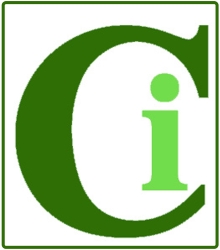
Circuit Innovations
Taking your electronics ideas and turning them into reality
| Home |
| Design Service |
| Kits and Products |
| Film and Television |
| Beginners Corner |
| Surplus Stock |
| Price / Ordering Info |
| Contact Us |
| Terms and Conditions |
| Links |
| About |
|
Circuit Innovations 24 Leasmires Avenue Easingwold York. YO61 3DU UK |
 |
| Beginner's Corner > Assembly Techniques |
|
The construction of simple electronic circuits is well within the ability of most people providing that the basic soldering skills are mastered and the correct tools are used. The basic toolkit for the beginner will consist of small and large pairs of pliers, wire cutters, an assortment of screwdrivers, an antistatic wristband and a good quality soldering iron. Soldering Nearly all electronics projects for the home constructor will require the use of a soldering iron, and the ability to produce reliable solder joints is a skill which will require some practice. It is often a very confusing task for the novice to choose a suitable soldering iron as there is such a wide selection to choose from. A good starting point is to choose a soldering iron with a power rating of about 45W which should be powerful enough to heat up most small solder joints. Many soldering irons use a low voltage element and are often supplied with a spring stand attached to the mains transformer. The element of the iron contains a thermostat which regulates the temperature of the iron. The tip of the iron is usually interchangeable which allows it to be replaced when it wears out and also allows different profiles of tip to be used for different tasks. Usually a chisel point tip is supplied with the iron but this may be replaced by a pointed tip for very detailed work, or a broader tip where a larger amount of heat is required such as for attaching wires to terminals. Many soldering irons feature a magnetic type of thermostat where the tip of the iron actually controls the temperature. This is done by the tip having a magnetic element at the back end whose magnetic property changes abruptly when it reaches a certain temperature. This works a magnetic switch in the iron's barrel which switches power to the heating element. Different temperature ranges are available and are usually indicated by the code number stamped on the back of the tip. Some soldering irons also have the facility for controlling the exact temperature of the iron from a controller that forms part of the base / stand but this is usually an unnecessary expense unless you are performing specialist work which is very temperature critical. Solder In the last century the usual type of solder would be a 60 / 40 alloy of tin and lead but since the introduction of the ROHS directive, it has been necessary to come up with alternative types of solder which are lead free. The newer types of solder are almost 100% tin with a small amount of copper and sometimes a small amount of silver. The disadvantage of the new solder is that it has a higher melting point which is why a 45W soldering iron is recommended. The other main drawback is that the solder can produce a very dull joint. When using the old lead-tin solder, a dull joint usually meant that it was contaminated and was a good visual indicator of dry joints and bad soldering. The new types of solder also feature a more aggressive flux which causes increased wear of the soldering iron tip and reduces its working life. Cleaning The tip of the soldering iron needs to be kept clean in order to produce good quality joints. The tip rapidly builds up a layer of old solder and flux remains which would contaminate the solder joint. Usually the soldering iron stand contains a recess for a small sponge which is kept moist with water. The tip of the iron should be wiped across the sponge at regular intervals in order to keep it clean and free from contaminants. After cleaning the tip, apply a small amount of solder to 'wet' the tip and prevent it from oxidising. |